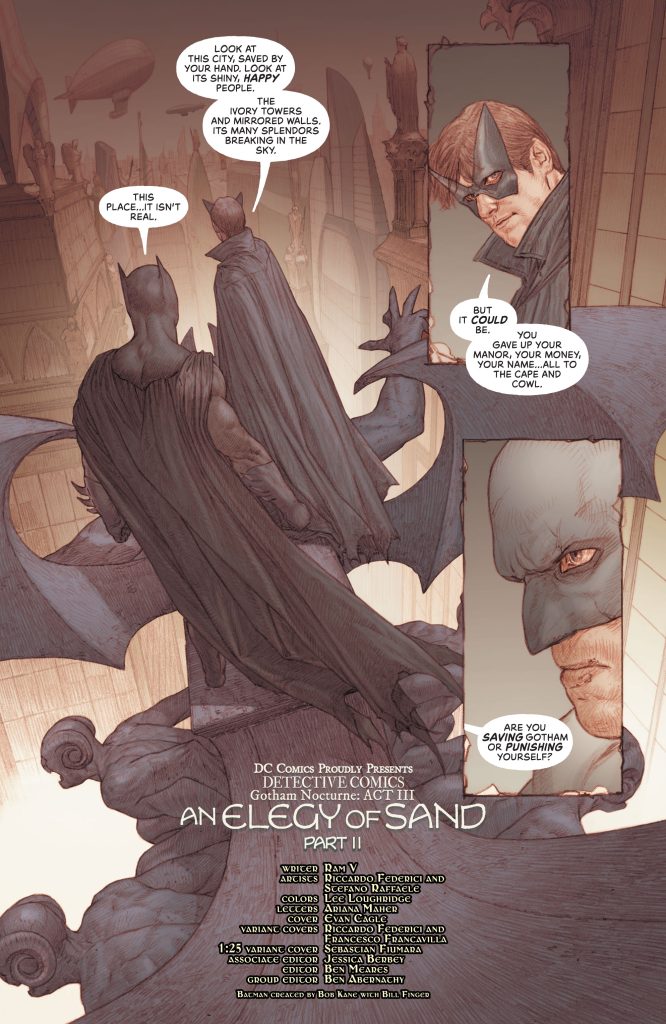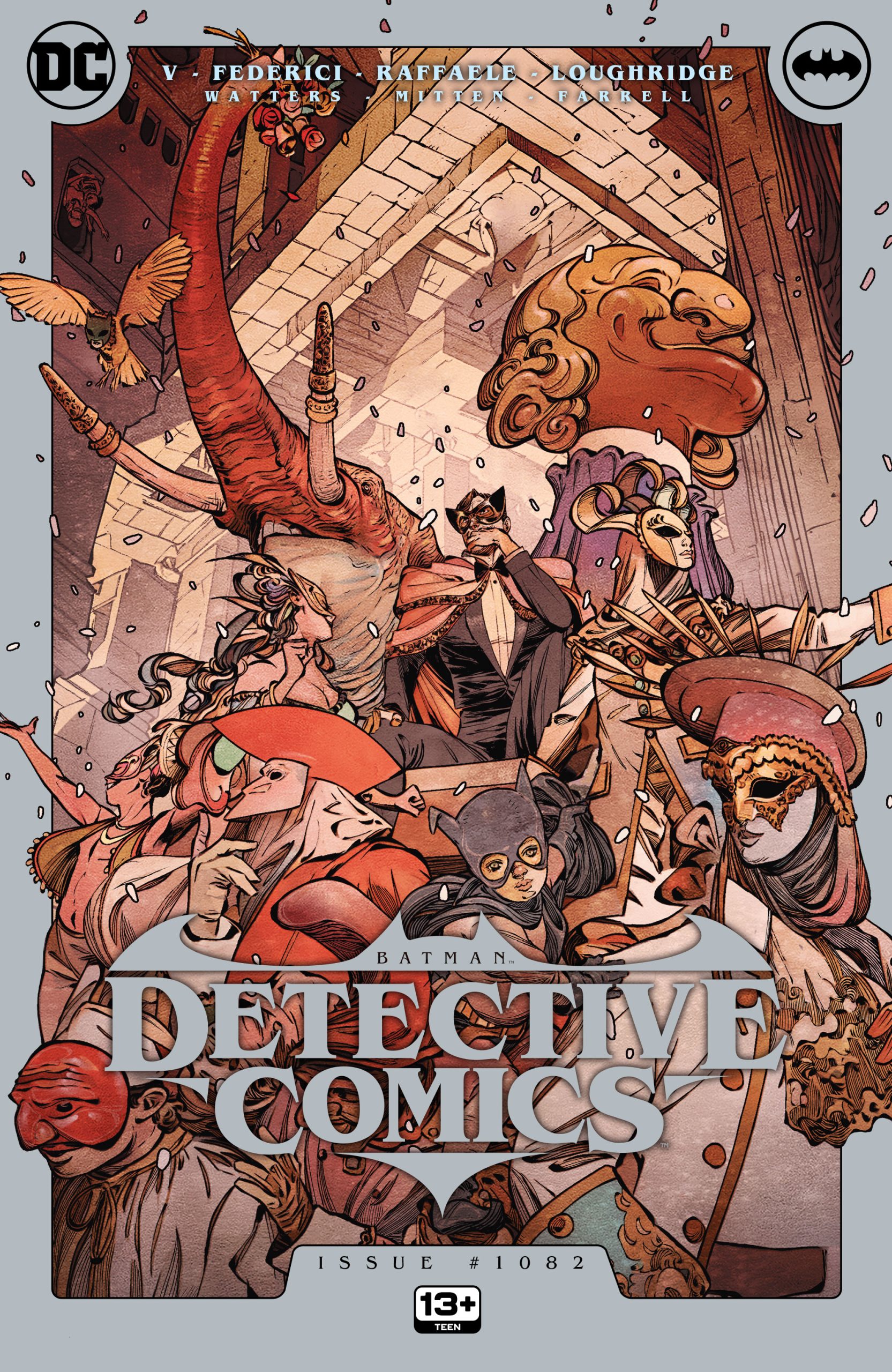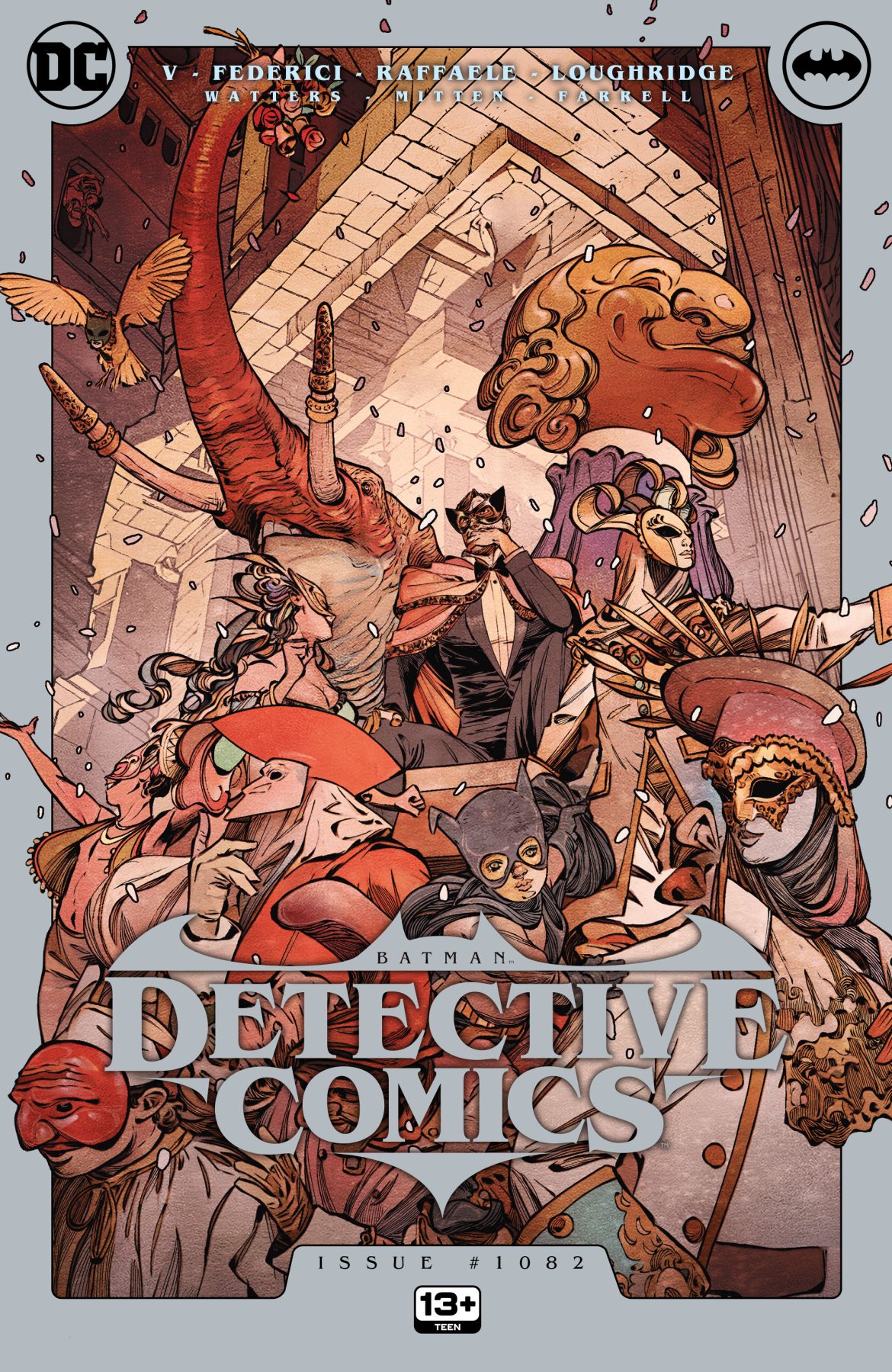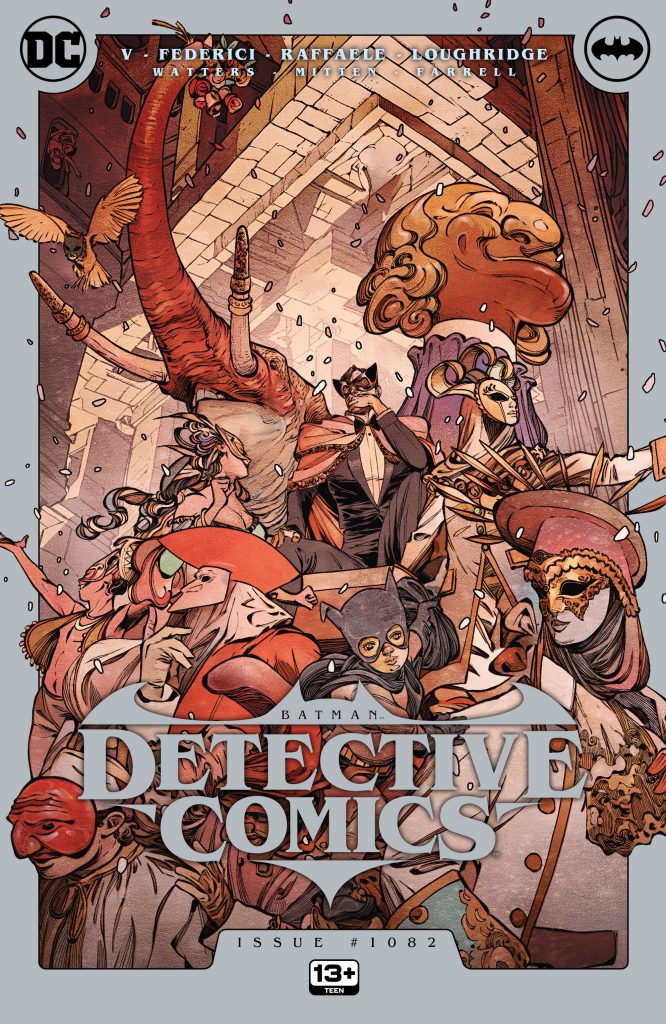In Detective Comics #1082, Dr. Hurt presents Batman with temptations in the desert, as Batman battles to his limit.
Title: Gotham Nocturne: Act III: An Elegy of Sand, Part II, and The Question: Forget Me Not, part 2
Writer: Ram V
Artist: Riccardo Federici and Stefano Farraele
Colors: Lee Loughridge
Main Cover: Evan Cagle (black and white version for 1:50 incentive variant)
Variant Covers: Riccardo Federici, Francesco Francavilla, Sebastian Fiumara
Release Date: February 27, 2024
This comic book review contains spoilers.
Above the false vision of Gotham City, Dr. Hurt tells Bruce he saved the city. Batman attacks, insisting it’s a lie, and Hurt says Bruce should have used his money to turn stone into bread, removing all crime with his fortune. A clown capers about as Batman insists that it’s not real.
Meanwhile, Renee Montoya jumps between rooftops in the real Gotham as the Question, searching for the Answer. She sees Cassandra Cain Batgirl, trying to hold onto her own case of Detective Fielding and her fading memory of Batman as the Orgham’s Reality Engine erases the truth.
Batman realizes his battle with the azmer continues in circles and climbs aboard Dr. Hurt’s blimp. He sees a city where he controls through machine guns and fighter jets, and jumps off the blimp to crash the plane, saving a crowd of people.
The Question and Batgirl interrogate an ex-cop, and he says Nash, the cop who murdered Fielding, was working for the Orghams. Batgirl and Question both strive to remember Batman.
Talia al Ghul stands alone in the desert, until her men appear, dragging the body of another of her servants, dead. She knows that death stalks her as well as Batman now.
As Ram V’s Batman Opera starts to build to its finale, we seem extremely far from victory indeed. In one sense, Batman is approaching the spiritual climax, as he faces temptations as Jesus did in his confrontation with the devil. Dr. Hurt even tells Batman to cast himself down from the high place (his blimp), but unlike Jesus, Batman does it, crashing a demonic jet fighter to save a child. There’s a lot of interesting symbolic resonance in these temptations and Batman’s responses. However, Dr. Hurt’s appearance is still extremely confusing. Hopefully Ram V gives us some idea of what’s happening on the outside, whether Dr. Hurt is a projection, or just part of Bruce’s mind, or some other explanation.
In addition to the confusing spiritual or psychological nature of Batman’s struggles, we have the meta commentary on Batman. Dr. Hurt taunts Bruce by asking if Batman must always win, or if Bruce should stop being Batman and spend all his money to stop crime. The assumptions behind these commonly tossed around fan or detractor arguments are more than a bit tired, given that they’ve been popping up even in movies like The Flash. Hopefully Ram V gives us a more satisfying answer than “Batman is a child’s fantasy because a real person should just spend all his money to fix problems instead”, but only the actual text will tell.
Lastly, the Question story intertwined with the main story has really good emotional impact, and does help to give a sense of what someone on the streets of Gotham is experiencing, but it still does absolutely nothing to provide an idea of why the Orghams are doing all this, and what the villains gain from it. To be fair to Ram V, he’s only one in a long, long line of Batman writers putting Gotham in absolutely ridiculous circumstances that should only be deployed in a year-long story like No Man’s Land or Batman Eternal – City of Bane, Joker War, and Failsafe definitely come to mind. But the frequency, while it does absolve Ram V of unique blame, nonetheless makes it perhaps even more annoying, as the problem keeps coming up.
Riccardo Federici’s art for Batman’s spiritual battle against Dr. Hurt continues to show his delicate, horror-focused renderings, while Steffano Rafaele’s Question segments are lovely thick-lined noirs, full of 16-panel grids and other devices to show the control of the Orghams and the sense of being behind prison bars for the characters. All in all, though I still resent the fact that DC refuses to schedule a single artist for their second main Batman book, the device of splitting into two narrative halves makes a lot more sense than many of the previous devices used to deploy multiple pencillers per story.

Backup Title: His Name Was Dr. Hurt, Part Two
Writer: Dan Watters
Artist: Christopher Mitten
Colors: Triona Farrell
Our vengeance foursome heads towards a castle outside of Gotham that has just appeared, hosting Dr. Hurt’s Semicentennial Masked Macabre. His abandoned wife is greeted by another woman claiming to be one of hundreds of brides. They tread deeper into the party, watching as four beautiful, brilliant, and hardworking men and women are tortured to death by gas. The man tricked by Hurt into jumping from a building with an empty grapnel gun starts shooting as the remaining three run deeper. The wife finds out she drank poisoned wine like the other brides and dies. Down to two, they head up a staircase, but the remaining woman pulls a gun on the man, revealing that Hurt replaced her personality with his own, and claims she is Dr. Hurt.
Dan Watters presents a Dr. Hurt tale without Dr. Hurt, as Ram V’s story has Batman battling a Dr. Hurt in his own mind, emphasizing the shadowy, insubstantial, confusing nature of the villain. The idea of a villain who is so powerful he can marry hundreds of women, brainwash thousands, and replace people’s minds with his own is interesting, but the sense of unreality created by a castle appearing out of nowhere in Gotham’s outskirts, or the way beautiful and successful people stand in their underwear waiting to be immolated, makes the stakes incoherent as well. The fear and pain and terror created are nicely done, but outside of the horror story effect, it’s hard to take it seriously. Nonetheless, I’m very curious how the tale will end up – whether Dr. Hurt will make an actual appearance, or whether the last vengeful party member will be the main “mouthpiece” of the villain!
Christopher Mitten does a good job of capturing the confusion and horror of the story without being too graphic or psychedelic. His cartoony, appealing style works well to give you a sense of sympathy for the characters in the midst of such insane, violent, and sadistic circumstances.
Evan Cagle’s main cover (also available in black and white for a 1 in 50 incentive variant) shows Dr. Hurt throwing a wild parade, including an elephant, with a child wearing a Batman costume in the center of the confusion – as with most of his covers, the symbolism is extremely rich! Riccardo Federici’s variant cover showing Batman riding a skull-headed horse fits well with his interiors, though it reminds me a bit strongly of Mikel Janin’s cover for Batman #73, both in the pencil shading and rendering and compositional subject and framing. Francesco Francavilla’s variant shows Batman kneeling in the desert beneath the stars, his cape stretched out like beseeching arms – nicely fitting with the interiors once again. Sebastian Fiumara’s 1 in 25 incentive variant displays a Batman bust made of sand as it crumbles – more excellent symbolism combining the desert and deconstruction of Batman themes in this run.
Editor’s Note: DC Comics provided TBU with an advanced copy of this comic for review purposes. You can find this comic and help support TBU in the process by purchasing this issue digitally on Amazon or a physical copy of the title through Things From Another World.


